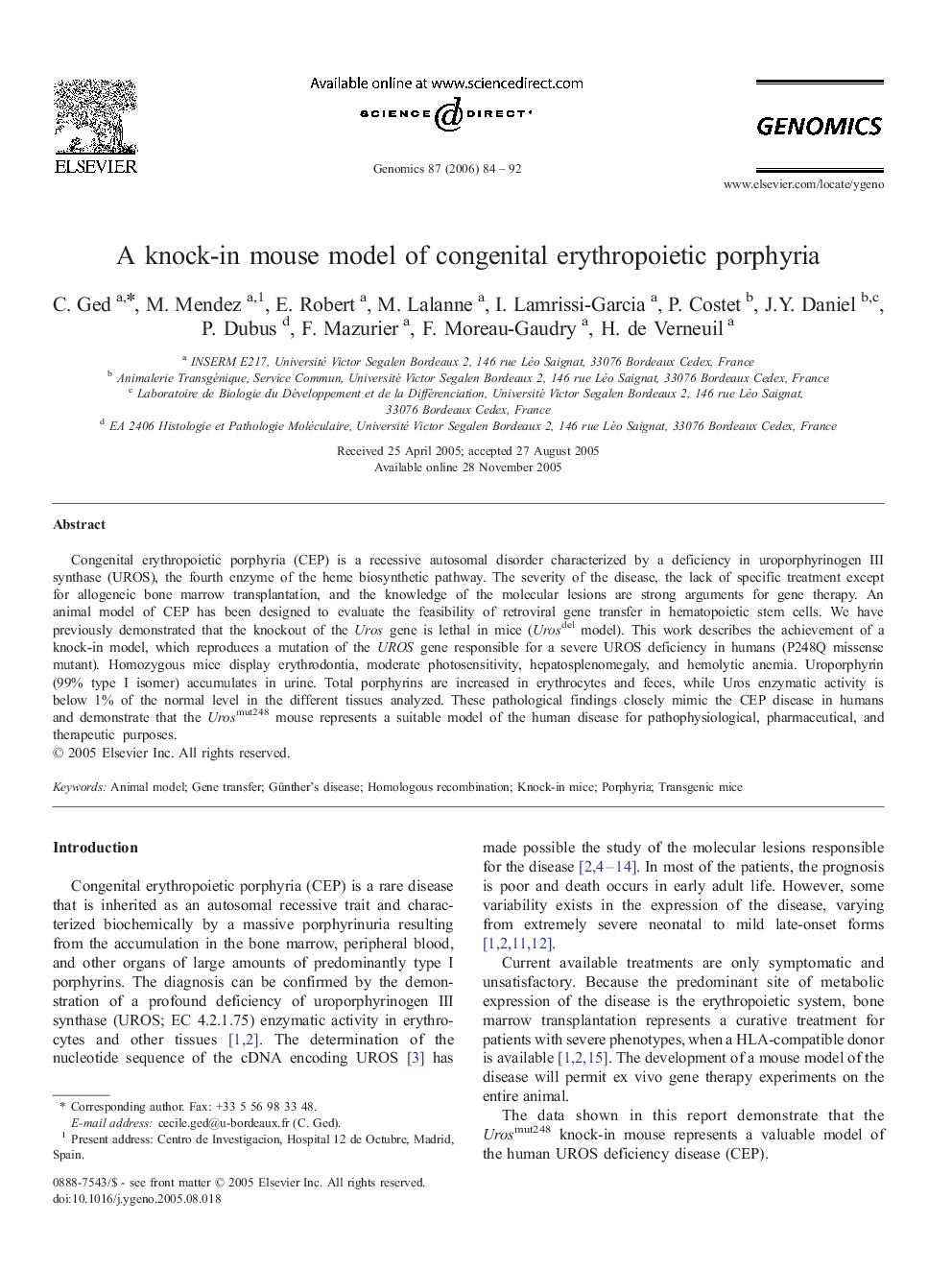| Article ID | Journal | Published Year | Pages | File Type |
|---|---|---|---|---|
| 2821780 | Genomics | 2006 | 9 Pages |
Congenital erythropoietic porphyria (CEP) is a recessive autosomal disorder characterized by a deficiency in uroporphyrinogen III synthase (UROS), the fourth enzyme of the heme biosynthetic pathway. The severity of the disease, the lack of specific treatment except for allogeneic bone marrow transplantation, and the knowledge of the molecular lesions are strong arguments for gene therapy. An animal model of CEP has been designed to evaluate the feasibility of retroviral gene transfer in hematopoietic stem cells. We have previously demonstrated that the knockout of the Uros gene is lethal in mice (Urosdel model). This work describes the achievement of a knock-in model, which reproduces a mutation of the UROS gene responsible for a severe UROS deficiency in humans (P248Q missense mutant). Homozygous mice display erythrodontia, moderate photosensitivity, hepatosplenomegaly, and hemolytic anemia. Uroporphyrin (99% type I isomer) accumulates in urine. Total porphyrins are increased in erythrocytes and feces, while Uros enzymatic activity is below 1% of the normal level in the different tissues analyzed. These pathological findings closely mimic the CEP disease in humans and demonstrate that the Urosmut248 mouse represents a suitable model of the human disease for pathophysiological, pharmaceutical, and therapeutic purposes.
